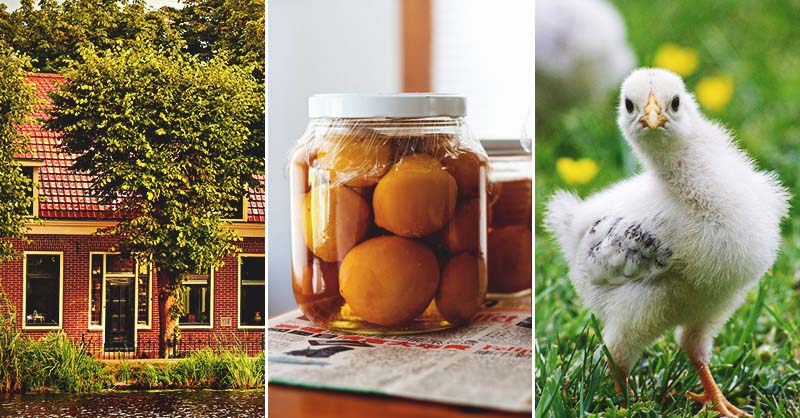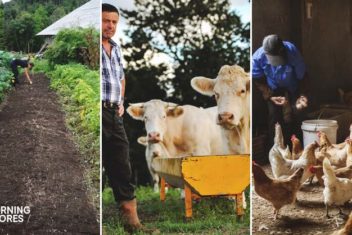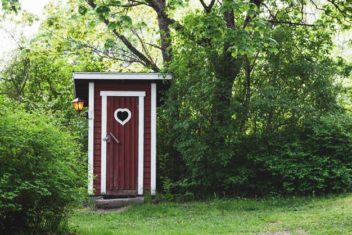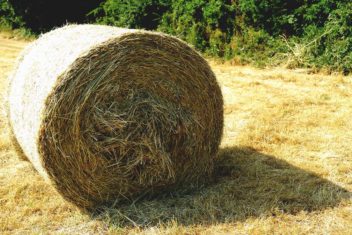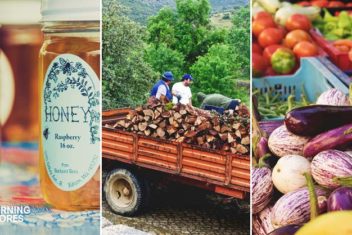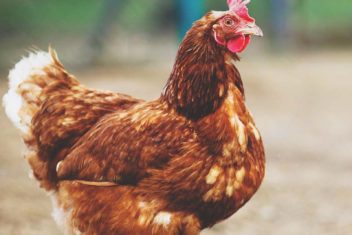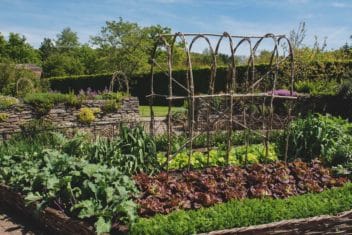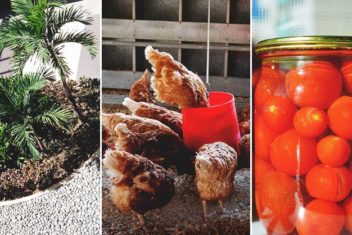I’ve recently started teaching a life skills course at my children’s homeschool co-op. It’s a beneficial class which teaches middle-school children basic skills they’ll need to survive in an adult world.
We learn everything from cooking skills, laundry skills, budgeting, and meal planning all the way to beginner gardening skills and how to raise small livestock.
Some of the students were curious about why they may need to know how to raise a garden or small livestock if they didn’t live on a traditional farm.
This opened the line of communication about urban or micro-farming. Many adults still don’t know about this type of homesteading, but we all should.
Homesteading can happen no matter where you live. I’m going to explain what this style of farming is, how you jump into it, and why you might want to. Here’s what you should know:
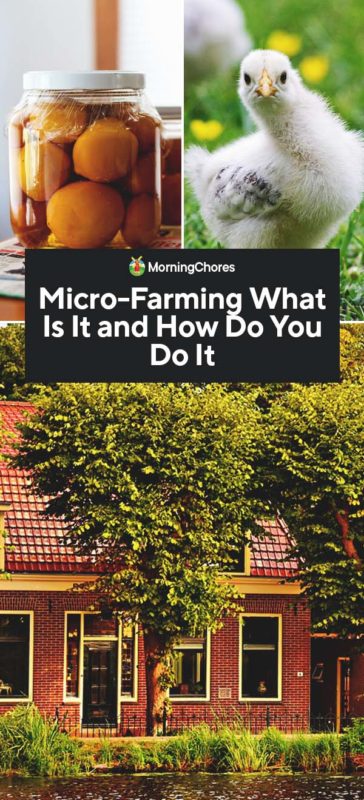
Urban Farming vs. Micro-Farming
Urban farming and micro-farming are similar in many ways but different in one specific way. An urban farm is exactly what it sounds like.
This is when you live in a city and are working towards self-sufficiency. You can raise container gardens on your balcony, have a small hydroponics set-up, or even an aquaponics set-up in your living room which some may assume is only a traditional fish tank.
If you live in a condo in the city which gives you a small backyard, you may have room to raise a couple of chickens or even rabbits for meat.
However, micro-farming is what you call it when you live in the suburbs or even on a rural plot of land, but you only have approximately a ¼ acre up to three acres.
On this amount of land, you could grow a small orchard, a small traditional garden, raise bees, have a greenhouse, raise chickens, ducks, rabbits, or even a few goats.
When we began homesteading, we started with micro-farming. We lived in a fixer-upper double-wide on approximately two acres which were heavily wooded.
We cleared land and made room to raise a garden, a greenhouse, we had raised garden beds, we raised bees, chickens, ducks, guinea fowl, and goats. On that land, we even planted a small orchard. It was a gorgeous little place and gave us the means we needed to buy a larger micro-farming homestead to have room for pasture.
From personal experience, if you desire to be self-sufficient, it can happen with a little creativity.
How to Start Homesteading on a Smaller Scale

We began homesteading on a smaller scale because we were in the middle of a financial crisis and had mouths to feed.
I didn’t want to feed my children cheap processed food, but I couldn’t afford healthy groceries from the store.
Our micro-farm wasn’t the prettiest because we built it with what we had. Our chicken coop was built from pallets, our goat barn was built from slabs, and we shopped the clearance racks at big box stores for all of our perennial plants and fruit trees.
Whatever your reason for wanting to be more self-sufficient, you can get started on a smaller plot of land or even in an urban setting. Here are a few tips:
1. Where Can You Raise Crops?
Do you live on a small plot of land or an apartment? You can still raise your own food. You may have to plant a hanging garden, grow crops in containers, start a salad table or try a window box garden.
Don’t be surprised if you must grow crops in multiple ways to have enough to produce the quantity of food you need for the season.
If you have room for a larger gardening plot, consider square foot gardening. This allows you to grow more in a smaller space.
Raised beds work well too because they keep everything contained in one area. This is important if you’re working in smaller quarters.
Look at the space you have available and make it work for you.
When we first began, I was desperate to raise enough food for our family to avoid an unhealthy diet on a meager budget.
I planted in raised beds, a traditional in-ground garden, I grew perennials in my front flower beds, and had a container garden on my back porch.
When I was concerned about how the livestock would cut into our budget because of their feed bill, I grew fodder in the house. We had two living rooms and one we didn’t use as frequently.
Therefore, it was the perfect location to set-up our fodder station. It worked well and kept everyone fed without breaking the budget.
2. Can You Put Food Away for the Winter?

What if you live in small quarters, you have enough room to raise a garden to cut grocery expenses for the season, but not enough room to grow enough food for the year?
You can work with this. Find a local grocery store or produce stand. You may even be able to contact a local farm and ask if they sell their seconds.
These are products they can’t put on the shelf because they aren’t ‘pretty.’ People won’t buy them. Instead, they box them up and sell them for a discounted price.
In my area, I can buy a box of ‘second’ tomatoes for $10. Social media is a great place to find bulk discounted produce as well.
You should also shop around your grocery stores when items go on sale. I’ve been known to buy corn for two cents per ear because the store received too large of a shipment and knew the corn would go bad before they could move it.
I struck a deal with the store. I took all the corn off their hands for this discounted price. When you find a place to purchase seconds or inexpensive produce, bring it home to preserve.
You can preserve your foods most commonly, through freezing, dehydration, or canning. It’s important to have space to store the food once preserved, but you’ll be able to put food back for the year all while spending less than you would if you grocery shopped by the week.
This will relieve stress for you throughout the year, and in the event of an emergency which may leave the stores bare, you won’t go hungry. You can also avoid fighting the crowds when panic hits.
3. Food Storage Places
As briefly mentioned above, it’s vital to have a place to store the food you grow or preserve. Apartments, condos, or even small houses can create challenges when trying to store enough food for months in advance.
Here are a few ways you can store food around your home:
– Freezers Are Vital
Purchase a small deep freezer. They can be stored in a bedroom or a closet to be kept out of the way.
Freezers are vital for storing frozen produce and meat. You may be able to speak with a local farmer or a meat processing facility to purchase whole pork or beef. This should feed a large family for a year.
If this won’t work for you, shop around for meat sales. Purchase the meat you can while it’s on sale and bring it home for storage in your freezer. You can find amazing deals when meat is on the verge of going bad.
The stores will deeply discount it, and if it’s stored in the freezer, it should be fine to eat past the due date because freezing stops the meat from further aging.
– Under Your Bed
My mother-in-law was the most prepared woman I’ve ever met. She was raised in hard times. Therefore, she knew when she had the opportunity to purchase something she may need, she should jump on it.
However, this meant her house was overflowing with food at any given time. She used the space under her bed to store excess food.
She’d place the goods in under-the-bed boxes and store them out of the way until she needed them.
My first year canning, this is how she had me store my canned goods. I’d place the jars back in the boxes they came in and place them under my bed. It was dark, and we had a vent under our bed which kept the food cool until use.
– Pantries, Closets, and Basements
If you’re living in an apartment you may not have much closet space or a pantry. If you do, put the space to use for food storage.
However, you can buy pieces of furniture or even build pieces of furniture which will work to store excess food.
Put the piece in your dining or living room as a decorative item. No one will be any wiser about what’s actually in the piece of furniture. If you have an old trunk, it could work for food storage too.
If you live in a smaller home on a small lot, you may be fortunate enough to have a basement. These work well for storing food.
A crawlspace can even work as a makeshift root cellar. This will take a creative eye in some cases but look at what you have and make it work for what you need.
– Makeshift Root Cellars
If you have space outside, you may be able to create your own makeshift root cellar. This doesn’t need to be anything fancy.
It could be as simple as placing a trash can in the ground. This keeps your food protected, stored at the proper temperature, and doesn’t take up any extra room inside your living quarters.
This could work well for canned goods, cabbages, potatoes, and most other root crops.
4. Perennials are Key to Micro-Farming
When urban or micro-farming, planting perennials is key. This is a crop which will return year after year. They should be planted where they can be properly cared for but won’t be disturbed.
Our perennials were planted in our front flower beds on our micro-farm. Perennials are important because they usually don’t take up a ton of room, they can be heavy producers, and you get bang for your buck.
If you’re trying to figure out where to start on this self-sufficient journey on a smaller plot of land, perennials would be a wise investment.
Don’t assume because you live in an apartment, you can’t grow perennials. You may have to plant them in a container, but with proper care, they should do fine.
5. Do You Have Room for Small Livestock?
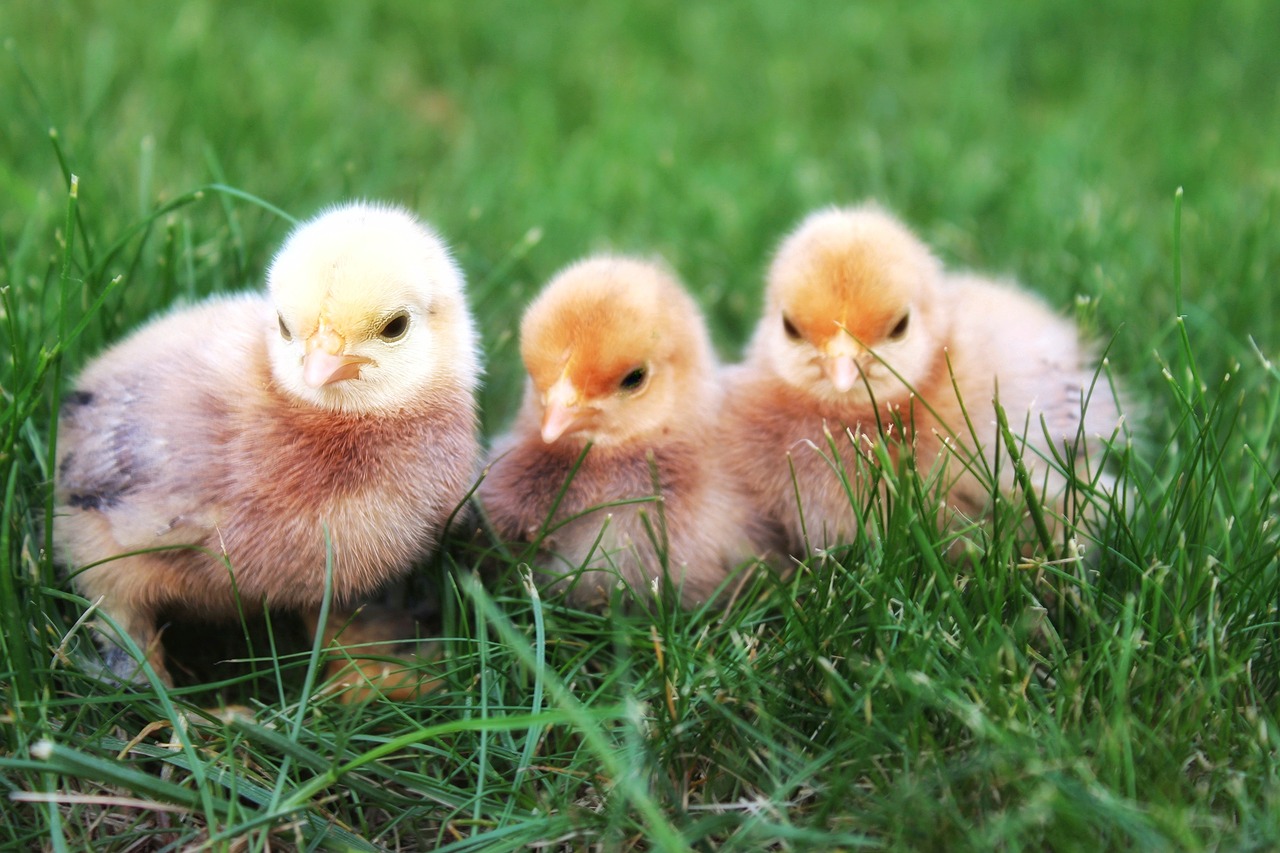
Food is a big topic and there are obviously ways to produce quite a bit of your own food in a small space with micro-farming. What you can’t produce, there are still ways to purchase and preserve food while saving money.
However, livestock is a big part of self-sufficiency unless you’re a vegan. The amount of space you have will determine what type of livestock you can raise.
If you live in an apartment, you’re most likely renting, therefore be sure to check with your landlord before jumping into raising livestock.
However, with their permission, they may give you access to the roof where you could put a small chicken coop and raise a couple of hens for eggs.
If you live where you have a small yard, you could easily raise two to four hens in a smaller chicken coop.
Rabbits are an excellent small meat source, and they’re raised in hutches. Therefore, they work wonderfully on smaller plots of land or even in a rooftop setting.
If you have a ½ acre or more, you may be able to raise a few goats. Please check with your county’s guidelines because goats are noisy. If you aren’t allowed to have them, there’s no hiding them.
The goats may not have room for pasture, but you can feed them hay and other nutritious foods to keep them happy and well sustained.
6. How Can You Extend Your Growing Season?
Part of being able to grow enough food to sustain you and your family with micro-farming on a smaller plot of land, is to know how to extend your growing season.
The more time you have to produce crops, the more crops you can produce. Start considering how you can give yourself more time.
This can be done by placing a small greenhouse in your backyard, growing crops using hydroponics or aquaponics indoors, or you could use cold frames.
Be sure to understand your planting zones and when your frost dates are, to know if you’ll even require an extended growing season.
I’m in planting zone seven. I’m able to produce almost year-round. For the two to three months when it’s too cold to leave crops out uncovered, I move them to my greenhouse.
However, you may be content with having a few months off. It’s vital to understand what your options are and where your personal limits are when producing your own food.
Why You Should Embrace Urban or Micro-Farming
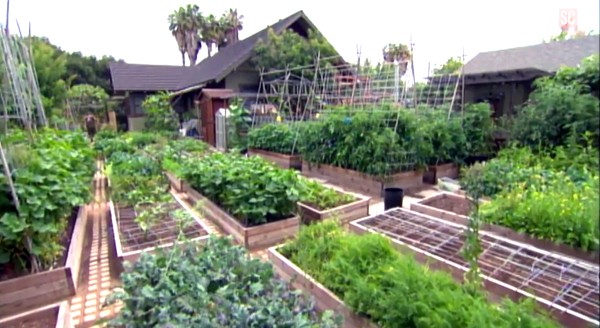
When we first started raising crops and livestock on our small piece of land, people thought we were nuts.
I can’t tell you how many people made fun of us for what we were doing. Don’t let the nay-sayers stop you.
Being self-sufficient, saving money, eating healthier, and being active is a great thing for you and your family.
If you’re taking this journey as a team, it should strengthen your relationships too. Those are all viable reasons you should consider micro-farming regardless of your current location.
Here’s the bottom line: don’t wait until you’re in your ideal situation to start homesteading. If it’s your dream, go for it.
If you’re driven, have a goal in mind, and are willing to work at it, you can make your dream of homesteading happen with micro-farming, even while living in the city or on a smaller plot of land.

